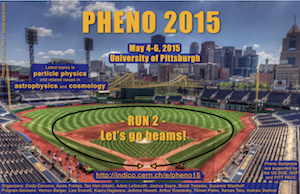Speaker
Dr
Thomas Rizzo
(SLAC)
Description
The primary goal of any future hadron collider is to discover new physics (NP) associated with a high mass scale, $M$,
beyond the range of the LHC. In order to maintain the same {\it relative} mass reach for NP, $M/{\sqrt s}$, as $\sqrt s$
increases, Richter recently reminded us that the required integrated luminosity obtainable at future hadron colliders
(FHC) must grow rapidly, $\sim s$, in the limit of naive scaling. This would imply, \eg, a $\sim 50$-fold increase in
the required integrated luminosity when going from the 14 TeV LHC to a FHC with $\sqrt s=100$ TeV, an increase that would
prove quite challenging on many different fronts. In this paper we point out, due to the scaling violations associated
with the evolution of the parton density functions (PDFs) and the running of the strong coupling, $\alpha_s$, that the
actual luminosity necessary in order to maintain any fixed value of the relative mass reach is somewhat greater than this
scaling result indicates. However, the actual values of the required luminosity scaling are found to be dependent upon the
detailed nature of the NP being considered. Here we elucidate this point explicitly by employing several specific
benchmark examples of possible NP scenarios and briefly discuss the search impact in each case if these luminosity goals
are not met.
Author
Dr
Thomas Rizzo
(SLAC)
